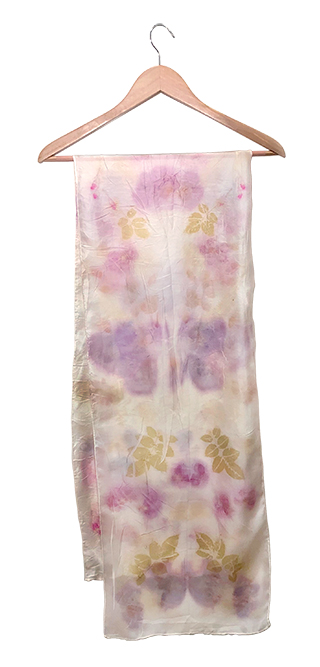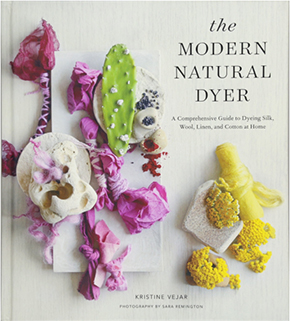

A Quick History of Natural Dyes
People have been dying textiles since the Neolithic Period, some 12,000 years ago. Back then, all dyes were natural, derived from plant sources like roots, berries, barks, leaves, fungi or lichens. These days, many dyes are synthetic, petrochemical cocktails and are not easily accessible if you want to say, try your hand at dyeing your own scarf. But the good news is that we can learn a thing or two from our crafty Neolithic ancestors. There’s a world of colors at our fingertips in the flowers and foliage in our garden, and it’s really easy to extract those colors onto a fabric. Although most fabric dyeing involves making a dye bath of one pigment and immersing the fabric in it, ecoprinting is different as it can sometimes preserve the shapes and textures of the plants you use, almost like a photograph. Google Search ‘eco printing’ or ‘eco dyeing’ to get inspired, check out our how-to video and try it yourself!
• Drop Cloth
• Silk Scarf
• Steamer Basket
• Stock Pot
• Scissors
• White Vinegar
• String
• PVC Pipes (These should fit into your stock pot)
Note: Generally, we tried using plants that had a lot of pigment. One way of testing whether or not a plant has a lot of pigment (other than looking at how vivid its colors are) is to rub the flower petals or foliage between your fingers and see how much color comes out. That being said, there are exceptions to this rule, especially when working with mordants, as it isn’t guaranteed that every mordant will work with every plant. Try different plants with different mordants and see which combinations work for you!
Mordants
Most plant pigments won’t affix to fabric unless the fabric is pre-treated with what is called a mordant. Common mordants such as salt, vinegar, alum, and cream of tartar help to permanently affix pigments to fabric. Finding successful combinations of pigments and mordants takes a bit of trial and error. We used white vinegar in our project, and found that it worked well for rose foliage, begonias, and petunia flowers, but not some of the other plants we tried. Experiment with your own plant and mordant combinations to find ones that work well, and have fun!
Fabrics
We used silk, but you can try this process with other natural fabrics like cotton, linen, or rayon. Any fine textured natural fabric should work well. It can be fun to take a trip to your local thrift store and find a good deal on a silk piece to experiment on.
Steaming
While we tried the steaming process with plastic electrical conduit, we don’t recommend it as it started to warp from the heat of the steaming. Heat-resistant PVC pipe will work best, can be reused, and can be cut down to whatever size you need. Remember that your fabric bundles will need to fit into your steaming pot with a lid over them.
Silk Scarves at Dick Blick
You can find silk scarves for dyeing projects at Dick Blick.
Natural Dye Guide
Here you can find a helpful guide to making natural dyes from plants.
Book: The Modern Natural Dyer: A Comprehensive Guide to Dyeing Silk, Wool, Linen and Cotton at Home
Expert Kristine Vejar shares the most user-friendly techniques for dyeing yarn, fabric, and finished goods at home with foraged and garden-raised dyestuffs as well as with convenient natural dye extracts. Click Here to view the book on Amazon.







